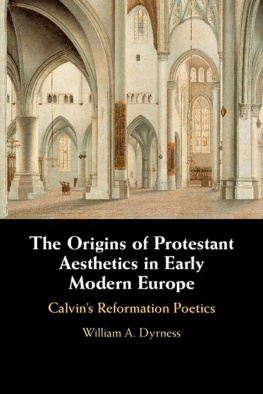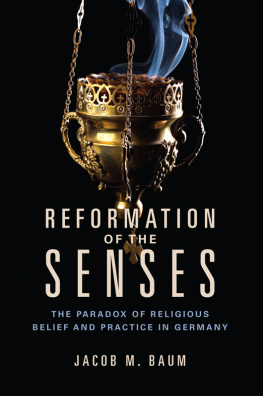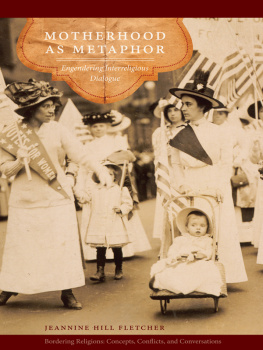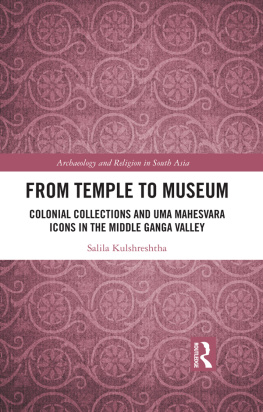Preface
This ethnographic study focuses on the religious practices and visual environment of five Buddhist temples and five Muslim mosques in Southern California. This study follows up an earlier study of Christian worship practices that I carried out with a group of student researchers from 20062008, funded by the Henry Luce Foundation. That study began as an attempt to understand the relationships between art and worship in the various Christian traditions. Early in our interviews, we discovered it was impossible to separate responses to images from reactions to other elements of worship, and the inquiry soon developed into a more holistic examination of the role of ritual practice, visual imagery, and even spatial arrangements in worship. That study was published in 2009.
There are clear limitations to such a study. The first was the obvious fact that my researchers and I were situated in an evangelical Christian, largely Protestant, theological seminary. My own specialty is the relation of theology and culture, especially religion and the visual arts, and most of the researchers were students in various areas of Christian theology. This meant that we approached our Buddhist and Muslim neighbors as outsiders, on the one hand, and not as specialists in comparative religion, on the other. To avoid obvious infelicities and misunderstandings, our protocols were edited with assistance of various Muslim and Buddhist consultants. In order to get at corresponding practices these colleagues helped us phrase our questions appropriately.
But the real problem was how we, as Christians, could properly understand what our respondents were telling us. We approached this in two principal ways. One was our preference (which we also followed in the Christian study) for open-ended questions that allowed respondents to answer in ways they felt comfortable with, taking the conversation to places that appeared important to them. The student researchers became skilled in asking appropriate follow-up questions to clarify things they did not understand, and respondents generously took time to explain what their answers meant. This resulted in interviews that were typically much longer than the Christian interviews had beenthey frequently extended beyond the hour limit we had set for ourselves, and the transcripts, some stretching to twenty or twenty-five single-spaced pages, provided us with a richly textured picture of these religious worlds.
But the other adjustment we made was to think about our work, and to write up our findings, as a conversation between the Christian author (and researchers) and the voices from these neighboring faiths. In this way, rather than ignoring the differences, we sought to take advantage of them and use the diversity to enrich the study. Where certain things puzzled us, I have commented on this; where other things surprised us, I have sought to understand why. In the conclusion I have tried to bring the three traditions together and provide a window on the differences and similarities among these traditions, with respect to ritual, visual elements, and belief. It would be a mistake then to claim this is a straightforward study of religious practices and visual elements of Buddhism and Islam; it is rather a Christian inquiry into these things and a conversation about the different aesthetics that emerge. Though specialists in Buddhist or Muslim practices may not find anything new or striking, it is hoped the comparative perspective may sometimes be illuminating.
Given its ethnographic character, the study is descriptive rather than normative. That is, we asked respondents to describe their actual experience of meditation or prayer, rather than their beliefs about these things. As any researcher knows, it is not possible to separate these completely. Frequently, respondents would preface their answers with a recognition that Buddhists/Muslims believe or think that... But they would just as often go on to describe what they usually did or how they ordinarily respondedsometimes in some contrast to what their traditions had taught them.
Since we were interested in what is typical and customary in these traditions, we watched for common expressions and recurring motifs that suggested shared values. Differences intruded, obviously, between immigrant and American-born Buddhists, for example, or between Sunni and Shia Muslims, and we will comment on these when they seems significant. But we wanted to see whether and to what extent these world faiths maintain their traditional foci in the multicultural and pluralistic environment of Southern California, and how these traditional elements issue in a particular aesthetic of practice that might be compared to that of Christians.
This goal might appear to leave us open to the accusation of simplifying (or essentializing) what are in fact highly complex and diverse faiths. Scholars are justifiably suspicious of global claims about what Buddhism or Islam teaches, especially when this is expressed in categorical terms. In the present case, when we began the research, we did not necessarily assume consistency among the various temples and mosquesin some cases we actually expected and looked for differences that others had called to our attention. After all our setting is a highly pluralistic city and Buddhism and Islam are immigrant faiths that come from a variety of settings. But in the event, a coherent profile of feelings and attitudes emerged in the course of the interviews, which I have tried to capture in this book. While we soon became aware of the diversitygenerational or culturalthat exists, this did not keep our sample from expressing a fairly consistent view of the practices and objects that we wanted to study. It is no doubt true that we missed nuances of differences that respondents were expressing, and this surely deserves further attention, but overall we were surprised by the commonality among the responses. Exploring in more detail the differences among these groups would entail a further study that would ask a different set of questions. While Shia and Sunni believers generally share a Muslim imagination, for example, exploring ways their visual cultures and ritual practices differ would be an entirely appropriate line of research. That however is work we do not attempt here.
As non-specialists we felt it appropriate, for the most part, to interview ordinary members of these communitiesonly two of eight at each site were leaders. This is especially fitting given that in both faiths the line between professional and lay leadership is not always clearly drawn. So this is a study of vernacular views of religious practicewhat might be called common Buddhism and common Islam, and not a study of normative Buddhism and Islam. We wanted to learn what ordinary Buddhists and Muslims share in common. The brief synopses of these faiths in the introduction is meant only to orient readers to the general development of these traditions, and their attitudes toward art and the visual in particular, not to suggest any normative history that informed our research questions. In this descriptive study then I have sought to draw a picture of these faiths as they are lived and performed, what in the Christian tradition has been called primary theologythat is the theology of the basic practices of prayer, confession, praise, and so on. This also influenced our preference for the language of meaning rather than truth in describing the faiths. That is we were interested in the experience and reception of faith rather than its historical or normative character. While this perspective will perhaps puzzle (especially) some Christian readers, the justification for it will become clear in the course of the study.
As a further limitation we have focused on the visual or sensory culture of these religious traditions. While some of the questions we asked were more general in nature, the majority centered on visual elements, ritual practice and spatial arrangements, that provide the particular focus for this (and the previous) study. We explain and defend this approach in the introduction, but here let me say that I have been motivated in this by two concerns. First, my own interest in religion and the arts has led me to believe that aesthetic factors are often more important to religious believers (as to nonbelievers) than is usually recognizedand indeed are becoming increasingly salient in our media saturated and aesthetically aware culture. This claim is, in part at least, an empirical one, and so a focus on visual culture provided an appropriate means to explore this hypothesis. Secondly, it seemed to me, that asking about the physical environment and the practices that animate this space, provided a fresh angle for the larger project of interfaith encounterwhich has become increasingly ramified and enriched in the last decade. Perhaps we can come to a deeper mutual understanding by reflecting on, and comparing, cherished practices and aesthetic objects, than we can by studying texts or statements of belief alone.







